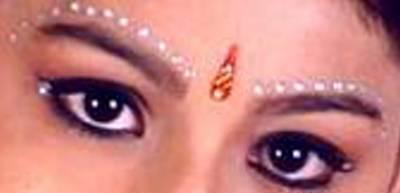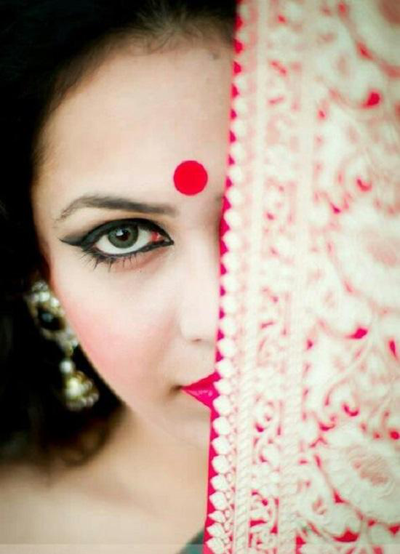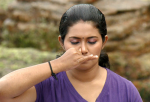Not Just A Dot!

What makes a Hindu recognizable anywhere in the world? Its the mark on their forehead. Traditionally called bindi, it has a lot more significance than just adding beauty to a face. What makes it so special for Hindus? Is it because it makes us stand out in the crowd? No, its contribution to a Hindu’s life is a lot more than just that.Bindi is a modification of the Sanskrit word Bindu which means a drop or a particle. Although you may find women wearing a bindi more often, this dot on the forehead is not restricted to the women alone. Even men wear it on special occasions like poojas. You may also find men who like to wear a bindi everyday. But why does a person wear this bindi? This has many interpretations and they differ with caste, gender or even marital status.
One such interpretation is that it is a form of energy that protects the person wearing it. It is an indication of the point between the eyebrows, which consists of all the power. This is the point on which people usually meditate. Despite its significance, it has become more of an accessory in the modern day. In earlier times different castes wore different types of tilak to emphasize various things. For instance, The Brahmins who were priests or academicians wore a tilak of white sandal wood signifying purity,the Khatriyas wore red tilak to signify valor,the Vaishyas wore a yellow tilak signifying prosperity and the Sudra wore black tilak to signify service to the other classes. However, this differentiation is no longer followed and anyone is free to wear any tilak of their choice.

It is also commonly seen that an Indian women puts vermilion at the parting of their hair. This is an indication that the lady is married. Another form of bindi is a tilak which, both men and women at the time of special poojas. It is said that great kings put tilak before going to a war as blessing to emerge victorious. This extremely significant bindi is known by different names in different parts of India. Its called Pottu in Tamil and Malayalam, Tilak in Hindi, Bottu or Tilakam in Telugu, and Kannada and Teep in Bengali. So next time you wear a bindi, remember that its not just a dot on your forehead.
- Kruti Beesam
















